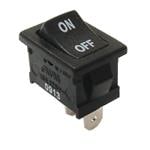Eutect uses galvo scanner for laser soldering
The laser soldering of components in electronics manufacturing requires the utmost precision to protect sensitive components thermally during the soldering process and to ensure reliable soldered connections.
The galvo scanner, which Eutect, the specialist for selective soldering automation, offers in combination with its own laser soldering modules, is a highly developed laser scanning system that implements this process more efficiently and to an even higher quality. In addition, the galvo scanner reduces the travel distances of the assemblies or the soldering module, which in turn reduces cycle times.
“The requirements for the soldering processes in electronics manufacturing are continuously increasing. Components are becoming smaller and smaller, and the packing density is constantly increasing, requiring an extremely precise procedure, especially for selective laser soldering. To achieve this goal, the galvo scanner is the ideal option, among others,” explains Matthias Fehrenbach, CEO of Eutect GmbH.
A galvo scanner is a highly precise, dynamic beam guidance system that can be used in laser processes such as laser soldering, laser welding, or laser engraving. The technology enables extremely fast and flexible positioning of the laser beam within the scan field. The scanner optics work with two high-precision mirrors that direct the laser beam in the X and Y direction. The mirrors are mounted on galvanometer motors that can be controlled very quickly and precisely, enabling the laser beam to be moved to a new position within milliseconds. The scan field size depends on the focal lengths of the collimation and f-theta lenses used. Eutect uses a scan field of 140 x 140 mm as standard. The combination of high precision, fast processing speed and flexible integration enables the galvo scanner to provide a reliable and time-optimised soldering process.
The scanner's dynamic beam control allows the laser beam to be focused with great precision on the solder joints of the assembly. New solutions are possible, for example, through targeted, almost simultaneous expansion of the laser beam through a fast circular path movement. The fast and flexible movements of the beam allow even complex soldering geometries to be processed with the highest precision. In addition, scanner technology can be used to achieve gentle, selective preheating.
“This means that the use of scanner technology offers numerous advantages that we can exploit in laser soldering,” adds Fehrenbach. The highly dynamic control system enables precise alignment of the laser beam, so that even fine structures can be reliably soldered. At the same time, the fast beam control significantly reduces cycle times, which increases production efficiency. The targeted heat input minimizes the thermal load on neighbouring components, which is particularly advantageous for temperature-sensitive assemblies. “Thanks to its compact design, the galvo scanner can be easily integrated into our existing manufacturing concepts and soldering processes,” says Fehrenbach.
Besides laser soldering, the Eutect Laser Knife can also be used for this purpose. With this system, the contactless heat input can be applied in a targeted manner using the laser, eliminating the need to move the laser source or the product to be soldered. “This option can save a considerable amount of work, especially for projects with sensitive cycle times,” explains Fehrenbach. Additionally, depending on the laser soldering process and assembly, individual kinematic modules responsible for movement in the X and Y axes can be dispensed with. “This applies to the soldering of individual points and entire lines,” adds Fehrenbach. The laser with galvo function can also be used for large solder joints, for example when soldering contacts to a film capacitor, to ensure fast and reliable heat input into the large-area solder joint.







